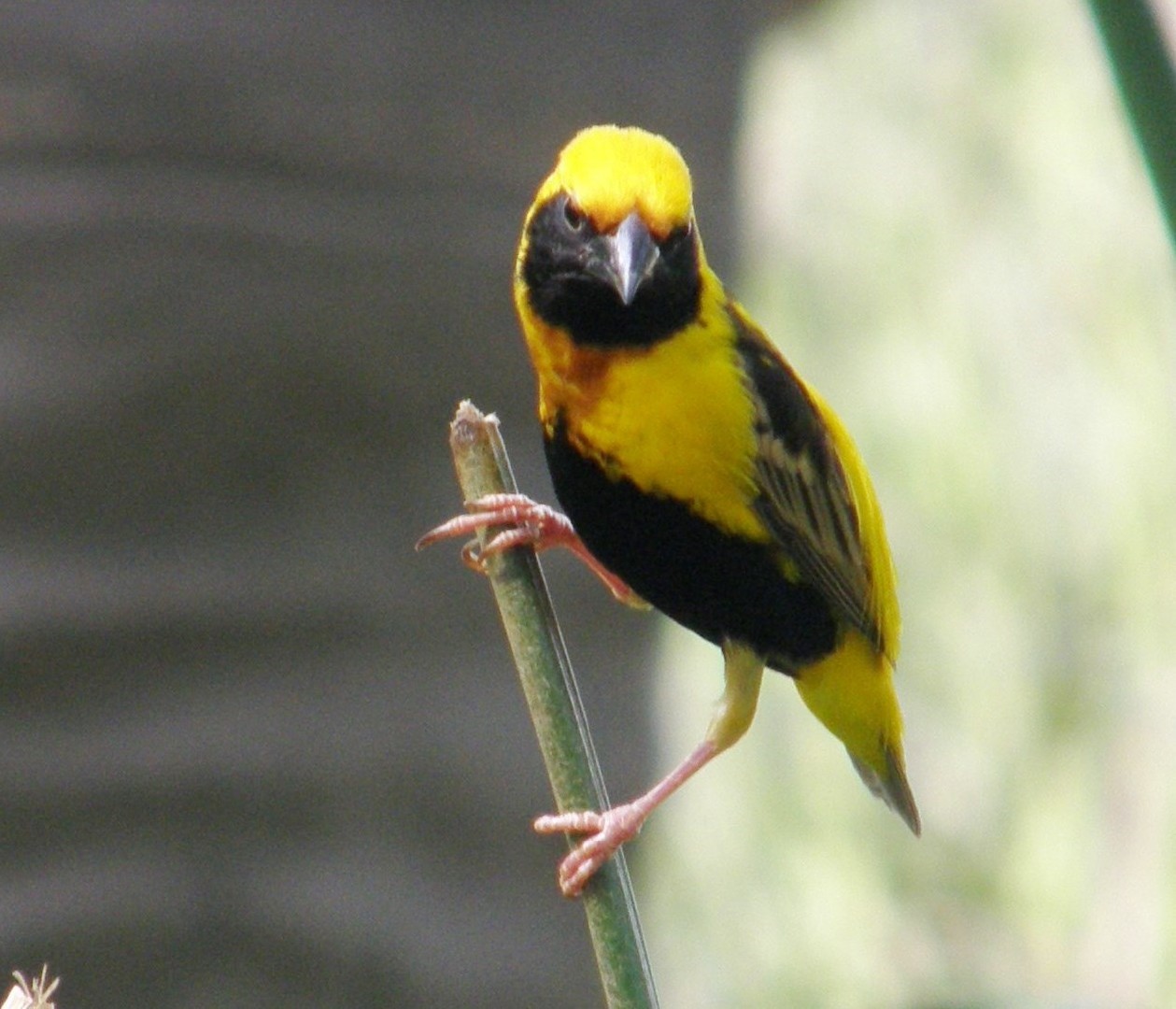Yellow-crowned Bishop
A species of Bishops and widowbirds Scientific name : Euplectes afer Genus : Bishops and widowbirds
Yellow-crowned Bishop, A species of Bishops and widowbirds
Botanical name: Euplectes afer
Genus: Bishops and widowbirds
Content
Description General Info
 Photo By Ivone Moreira , used under CC-BY-SA-3.0 /Cropped and compressed from original
Photo By Ivone Moreira , used under CC-BY-SA-3.0 /Cropped and compressed from original Description
The yellow-crowned bishop is 95 to 105 mm (3.7–4.1 in) in length and 15 g (0.53 oz) in weight. During the breeding season it is sexually dimorphic — that is, the observable characteristics of the males become more apparent. During the breeding season, the male has distinctive golden yellow and black plumage. The bill of both sexes is short and conical. The color of the male's bill is black during breeding season; by contrast, during non-breeding season, the male's bill is horn in color, as is the female's. The legs and feet are pinkish brown. The male has a black lower face, throat, breast and belly, a wide black collar on the back of the neck, and a brilliant yellow crown, forehead, and hindcrown. There is a yellow patch on the shoulder, and the rump and back are yellow. The wings and tail are brown. During non-breeding seasons the male plumage looks like the female plumage. The female yellow-crowned bishop has pale brown upperparts, with darker streaking. The eyebrow is paler and the underparts are off-white with fine dark streaks on the breast and flanks. The male in breeding plumage resembles the yellow bishop, but the latter species is larger and lacks the yellow crown. Non-breeding males and females can be confused with those of the southern red bishop, but have white rather than the buff-coloured underparts of the latter. 
Size
10 cm
Nest Placement
Shrub
Feeding Habits
Yellow-crowned Bishop predominantly feeds on grass seeds, incorporating animal matter like mealworms, caterpillars, and termites. Forages on the ground, showcasing unique adaptability to diverse food sources while also consuming seeds from sedges and herbs, and occasionally young maize.
Habitat
The yellow-crowned Bishop primarily inhabits open grassy areas, favoring wetland habitats such as swamps and regions prone to seasonal flooding. Its preference for low-altitude valleys, although it can be found up to 1800 meters in certain areas, highlights its adaptability to various wet environments. This species is broadly distributed across grasslands and wetlands within its geographical range, with a close association to water bodies necessary for its breeding requirements.
Dite type
Granivorous
General Info
Feeding Habits
Bird food type
Behavior
The yellow-crowned bishop eats insects, grain, and seeds. It lives in flocks with both males and females. In non-breeding seasons the flocks may contain weavers and sparrows. The call is a "high-pitched, rasping, buzzing swizzling, somewhat insect-like: zzzzzzz, zzit, zzit, zzzz". Nesting is November–May, peaking from December–March, and males are polygynous, but the males do not breed in colonies. Each male will build two or more oval nests with a top opening, attracting a female to each nest by flaring their yellow feathers and display flights. Yellow-crowned bishop are gregarious and nomadic, wandering to breeding areas in response to rainfall. Nests are built among standing stems of grasses or sedges or shrubs. Bent over stems of live grass help hide the nest. The female will lay from two to four white eggs. Egg incubation is done solely by the females and lasts 12–14 days. Newborn chicks leave the nest after 11–13 days and are fully independent after an additional five weeks. 
Distribution Area
The yellow-crowned bishop is native to the African countries of: Angola, Benin, Botswana, Burkina Faso, Cameroon, Central African Republic, Chad, RCongo, DRCongo, Ivory Coast, Ethiopia, Gabon, Gambia, Ghana, Guinea, Guinea-Bissau, Kenya, Lesotho, Liberia, Mali, Mauritania, Mozambique, Namibia, Niger, Nigeria, Senegal, Sierra Leone, South Africa, Sudan, Tanzania, Togo, Uganda, Zambia, and Zimbabwe. It has been introduced in the following countries: Jamaica, Japan, Puerto Rico, Portugal, Spain, and Venezuela. Escaped males have been noted in southern California, where they defended territories. It prefers habitats such as grasslands, vleis, and pans. It likes wheat and sorghum fields, and weedy vegetation along wetlands. 
Species Status
Not globally threatened.
Scientific Classification
Phylum
Chordates Class
Birds Order
Perching birds Family
Weavers Genus
Bishops and widowbirds Species
Yellow-crowned Bishop